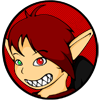Sign In
CloseDifferences Between Referencing and Copying/Tracing by WingedObsidian
A journal to help those to know the differences between referencing, from art to literature and copying/tracing (other related names such as mirroring, duplication, mimic, replica, etc).
Definition of Reference:
(Noun)
1. The action of mentioning or alluding to something.
Example: "he made reference to the enormous power of the mass media" and "his journal contains many references to railways"
2. The use of a source of information in order to ascertain something.
Example: "popular works of reference"
(Verb)
1. Provide (a book or article) with citations of sources of information.
Example: "each chapter is referenced, citing literature up to 1990"
2. Mention or refer to.
Example: "the media referenced our association in almost 40 articles"
References are something that all artist's use as a guide. It's a learning tool to help those to learn perspective to structure. Without references, no one wouldn't know what a shark looks like and what features it has. But, while using references, you as an artist must form your own art style. However, the art style must be created by you and not from copying/tracing an existing style.
Definition of Copy:
(Noun)
1. A thing made to be similar or identical to another.
Example: "the problem is telling which is the original document and which the copy"
- A single specimen of a particular book, record, or other publication or issue. Example: "the record has sold more than a million copies"
(Verb)
1. Make a similar or identical version of; reproduce.
"each form had to be copied and sent to a different department"
- Imitate the style or behaviour of. Example: "lifestyles that were copied from Miami and Fifth Avenue"
Copying is something when someone tries to copy an image the best they can, but it's not completely line to line, comparing to a traced image. However, doing this doesn't benefit you to improve, as you are not learning anything from it. In other words, you are not learning how to shade, colour, lineart, etc - by copying. Basically, it's the complete opposite of that. This is something that happens, when someone over references a image, to the point that it looks like a complete replica.
https://www.youtube.com/watch?v=hC0afviQw2w
Example 1: Link (Original: Link)
Example 2: Link (Original: Link)
Definition of Fanart:
Fan art or Fanart are artworks created by fans of a work of fiction (generally visual media such as comics, movies, television shows or video games) and derived from a character or other aspect of that work.
Fanart is a good example, due to that there are some who over reference a character, making them a copy/duplicate of the original image. Though there is a few, who don't understand the difference between referencing and copying. However, there are those who do it, which is either because they are bad at drawing or want popularity.
Definition of Tracing:
(Noun)
1. A copy of a drawing, map, or design made by tracing. A faint or delicate mark or pattern.
Example: "tracings of apple blossoms against the deep greens of pines"
Tracing is a word similar to copying, but in the art world, they are completely different. Tracing is a term used when someone uses tracing paper, a layer using an art program, or by putting a sheet of paper over an image, and just complete draw that image line to line. So that it looks the same as the original, but using a different art format like digitally or traditionally. Anime and FanArt do fit into this, because it's a popular genre through people's interests. It is also the same with copying. Tracing is also used, when it comes to bases, such examples as The Lion King, My Little Pony, Fairy Tail, and so on with the list.
Example 1: Link (Original: Link)
Example 2: Link (Original: Link)
Definition of Plagiarism:
(Noun)
The practice of taking someone else's work or ideas and passing them off as one's own.
Example: "there were accusations of plagiarism"
Plagiarism is a word used in schools, college, and universities. So, that students don't copy, when it comes to their essays/coursework and have to use their own words. However, it also comes into the art world as well, to where people try to claim things as their own, though they are not the artist of said creation. This includes concepts of said character, used for shows, games, films, etc. For example, Sonic The Hedgehog. This also comes under those, who recolour, don't reference, and rip character designs.
Example 1: Link
Example 2: Link
These two concepts are from two different animes. The first link shows the character Sailor Uranus from Sailor Moon, while the other one shows Yui from Fushigi Yugi. They both look the same right? But, they are not, as their designs are completely different, including the hair.
https://www.youtube.com/watch?v=IdPVolochgE
Recolours is something that some people tend to do to original images, for the fact they are bad at drawing or just too lazy. Here are two examples, which includes the link to the original. In some cases, people will reduce the size of the recoloured image, to make it difficult to trace the original when using TinEye, Google Images, or other sites.
Example 1: Link (Original: Link)
Example 2: Link (Original: Link)
Definition of Copyright Infringement:
Copyright infringement is the use of works protected by copyright law without permission, infringing certain exclusive rights granted to the copyright holder, such as the right to reproduce, distribute, display or perform the protected work, or to make derivative works.
Copyright Infringement is the same like Plagiarism, but is used within businesses, instead of schools, college, and universities. It is used by businesses, such as Sega, Nintendo, Sony, Microsoft, and many other companies. To prevent others from stealing their ideas and creations, without their permission. This doesn't just include other companies, but people around the world. For example, YouTube commentators, artists, composers, and so on. But, companies such as Nintendo, do love to receive fanart, as it's considered as an advertisement to them. Same goes to commentators, who play their games. However, not all companies like the idea of commentators posting videos of them playing their games, even though it's considered as advertisement.
This is indeed a lot to take in, regarding on understanding the differences between them. However, there is a lot more to it.
A good example is poses, since there are some who try to claim it, though you can't. As everyone in the world can create said pose, by using their bodies alone. This does make spotting a person difficult, when they're tracing or copying. Though it's not a bad thing to use poses that are the same as others, as long as you don't trace and/or over referenced it.
If you trace or copy, remember that lying to people saying that you don't, will only make the consequences a lot worse. Comparing to someone who's honest and tells the truth, first time round. But, if you are lost or there is something you don't quite understand, don't hesitate to ask someone. No one is going to bite you for asking.
I hope that this has been useful to those who don't understand or just starting out as an artist. Next time, I will make a journal regarding on tips for traditional and digital artists.



Link
GeekyGirlHeather
This was very nice I really liked out how you did this
great job my friend!